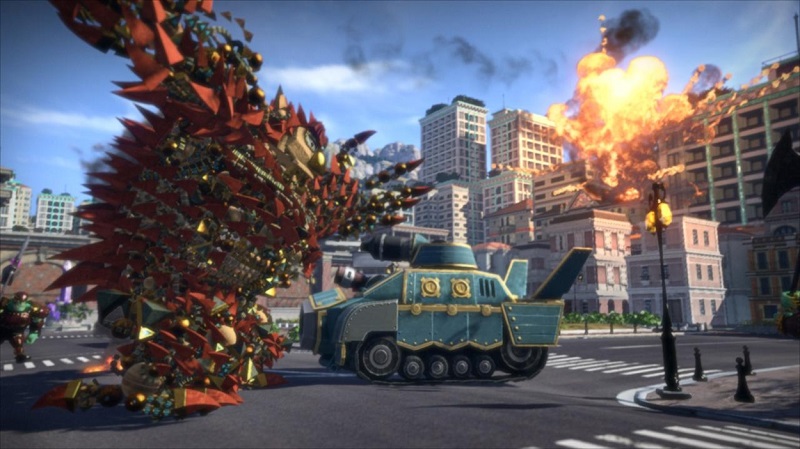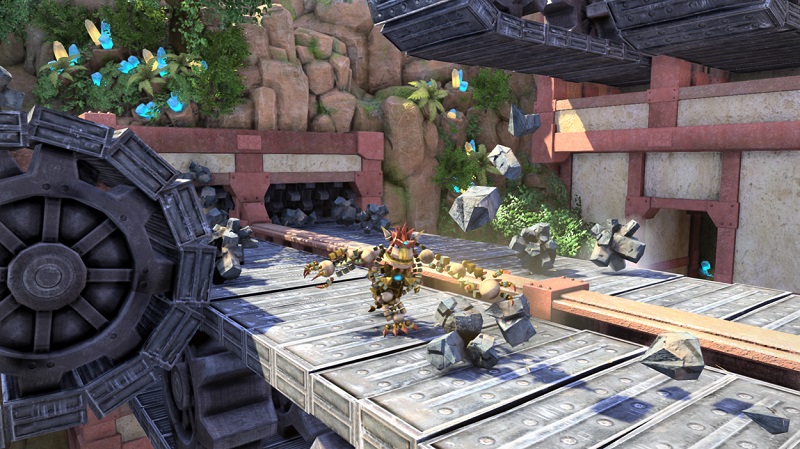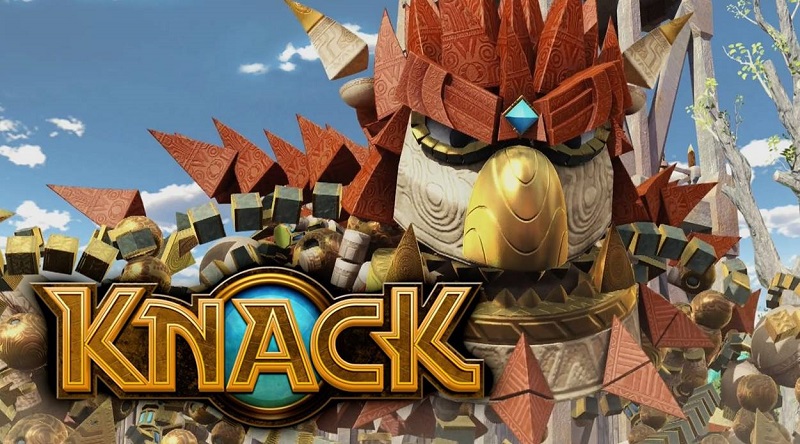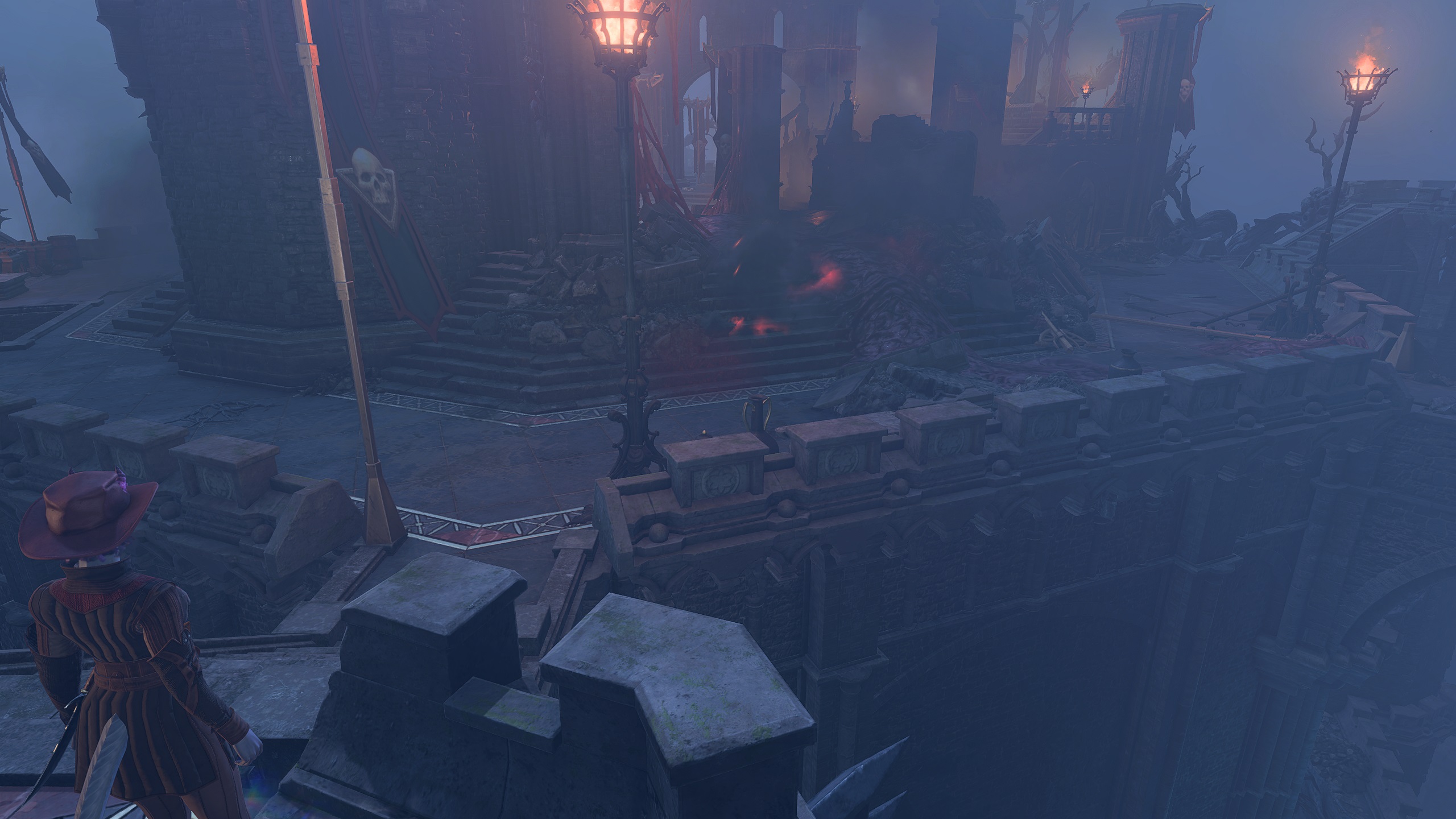A Play Station 4 exclusive from SCE Japan Studio, Knack combines the aesthetic prowess of Dreamworks Animation with the cold, stale rhythm of the scientific method. It is a beautiful game; it is a boring game. Here I’ll detail some of its beauty and blunders.
Storyline
The Goblins have gone to war against the humans. In response, Dr. Vargas, a specialist in ancient artifacts, composes Knack, a sentient creature composed of ancient artifacts and mystical powers. Knack proves a reliable weapon against the Goblins, but from within the humans rise two traitors: Viktor and Rebekah. They seek an ancient gate containing a hidden power related to the ancient artifacts. When the gate is opened, the hidden power escapes and terrorizes humanity. The story ends in victory as Knack pulverizes the hidden power and peace is restored to the human race”¦Or is it?
There’s some beauty in the story, because it’s told by great actors. Jennifer Hale, voice of Commander Shepherd from the Mass Effect series, played Rebekah. Her voiceover talent accentuated Rebekah’s impudence toward the humans. Josh Keaton, too, as Lucas conveyed a believable, boyish innocence.

Nonetheless, I’d say the story is Knack‘s biggest blunder for two reasons. First, what should be kept secret isn’t. It’s no secret that Viktor and Rebekah are traitors; their purple outfits, evil visage, and suspicious dialogue suggest something is amiss about them. But it shouldn’t be this obvious from the get go that there are traitors that will complicate the story. What makes traitors pivotal characters is some belief or sense that they are strongly unlikely. What would have made Viktor and Rebekah more complicated and surprising characters? Perhaps giving them time to be human, more loving and charming until they have a motive for defying the human race.
Second, it’s too long. Knack is an example of a good story told poorly. Knack prolongs events that needn’t be prolonged. For example, all chapters have around three to five sections. The story would be experientially more satisfying, I think, if these extraneous parts were cut; they seldom add and more often take away from the player’s experience of an otherwise good story.
Gameplay
There are at least two ways in which gameplay can be basic: easy and intuitive or bland and uninteresting. Both are true of Knack. The controls are simple to grasp. When Knack is gargantuan, he can pick stuff up and throw them at enemies. Power moves, too, are easy to navigate with a simple button combination.
But gameplay is also bland and uninteresting. Kinds of enemies hardly vary. There are warrior Goblins, archer Goblins, detonator Goblins, mech-Goblins, and so on. There are also warrior-like humans, gunmen, detonators, mech-humans, and so on. The only obvious difference between human enemies and Goblin enemies is that the former have blue skin and the latter have blue outfits.
Gameplay is also uninteresting because of its difficulty curve. I finished the game on difficult mode, but each chapter, excepting the final boss, had identical and therefore predictable difficulty curves. The enemies remain as strong as Knack, meaning most enemies take about the same hits as they did when he was small. Difficulty curves should be unexpected, not predictable.

Graphics
Graphics is where Knack shines. The game looks gorgeous, and the animation is quite impeccable. The art style resembles something like Cloudy With A Chance Of Meatballs. Each level has an incredible amount of detail, like the careful chiaroscuro in the outdoor chapters and Knack’s dying animation. Watching Knack die is oddly satisfying, for his body parts spill across the floor like lifeless beads. They fall off ledges, knock against the wall, roll around aimlessly, and so on. For a death animation, it’s quite lively. Also, the characters’ motions are impressively fluid. There is little awkwardness in how a character moves, gestures, or talks. Every movement is meaningful. It’s these little motions that add to the game’s visual aesthetic.
Sound
The soundtrack is mostly orchestrated and mostly unimpressive with a few exceptions. The themes that play on the title screen don’t really fit what the game is. The music is well composed, but it’s ill-placed. The dramatic and dark introductory music does not introduce the player to the kind of game it represents. The game sounds intense, intriguing, powerful, and even touching, but none of these are true of the game itself. The music exaggerates the game.
With a mighty soundtrack, Knack is a quiet game. During gameplay, there is minimal dialogue between characters; but the silence seems an opportune moment to expose little things about the characters and enemies. Does Knack complain when he has to reassemble after he dies? What does an irrelevant conversation between Dr. Vargas and Lucas sound like? Does Viktor care whether Knack and his team have broken into his castle? Break the silence. Let the player hear banter over inconsequential things, for such banter often illuminates more about the characters than dramatic plot construction.

Replayability
There are plenty of collectibles throughout the game-a gratuitous amount, to be sure. Each collectible is a piece to unlock a special ability or new kind of Knack. This is incentive to replay the game, but a slothful story and bland gameplay weaken it. The story makes the player feel like they’re slogging between each collectible, and the gameplay adds little challenge to prevent the player from attaining them. If the developers executed the story and gameplay well, then there would be stronger incentive to replay the game. As it stands, however, Knack has markedly low replayability.







